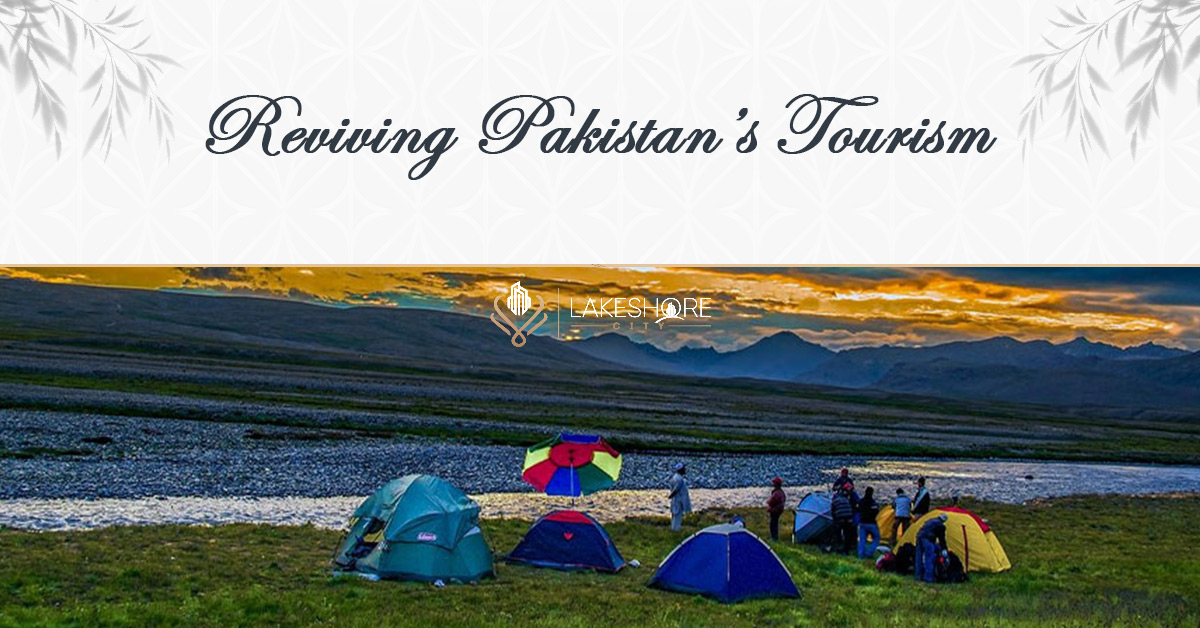Recently, a large number of domestic visitors began travelling to those locations after PTI Chairman Imran Khan tweeted images from his trip to Kumrat and Palas in Kohistan.
After being transferred to the provinces eight years ago, the tourism industry still receives little attention. Failures include developing a provincial tourism strategy and having insufficient facilities to draw both domestic and foreign tourists.
Despite its enormous potential, the tourist industry is still not a top priority. As a result, despite its enormous potential, travel and tourism’s contribution of the GDP has been essentially unchanged at 2.8%. This percentage hovers around 30% in several nations with nearly identical tourist-attraction offerings.
Due to the security situation after 9/11, which affected the entry of foreign tourists, the business suffered a setback.
Khyber Pakhtunkhwa has emerged as the leading province in terms of formulating a provincial tourist policy, which it is subsequently putting into practise. The Balochistan Tourism Act and tourism guide were also passed in Balochistan in 2014. A state tourism policy for Azad Jammu and Kashmir was created in 2016, however the law division has not yet approved it.
In Punjab and Sindh, there isn’t a specifically designated provincial tourism strategy, and in Gilgit Baltistan, it still falls under the federal government’s control, which doesn’t appear to have any active policies or institutions to promote international travel.
The provinces have picked locations to build tourism facilitation facilities in order to gain from tourism. While Punjab has touted its sightseeing bus service in Lahore, its Cholistan desert rally, and its Murree chairlift project as success stories, Balochistan has chosen 64 sites with a goal of enhancing natural and heritage tourism.
Additional opportunities for religious tourism (Sikhism, Hinduism, and Buddhism), ecotourism, and showcasing Mughal and British imperial buildings exist in KP, Punjab, and Kashmir.
The execution of comprehensive programmes to draw tourists is where the true issue lies.
The issues that have been identified as impeding tourism in Pakistan are primarily related to insufficient infrastructure, bad travel advice for foreign visitors, boarding and lodging, poor connectivity by air and road, the need for NoCs for foreign visitors to travel to northern regions, including AJK, a lack of trust in the public and private sectors, subpar tour operators, and a lack of skilled workers in the sector.
Due to these difficulties, Pakistan was placed 124th out of 136 nations in the 2017 World Economic Forum Travel and Tourism Competitiveness Index. The lowest score, 135 out of 136 countries, was brought about by the need for visas.
Among the 136 nations polled for the report, the country came in at number 132 in terms of prioritising travel and tourism. Similar to this, the efficacy of marketing and branding to draw tourists received the 125th out of 136th place score.
The assessment gave hotel rooms a grade of 129 and the quality of tourism infrastructure a ranking of 123. Pakistan has 36 cultural monuments that are part of the World Heritage List and 127 natural attractions.
Few areas that required action were identified through discussions and interviews with tour operators and provincial tourism departments: the revival of tax concessions on the import of hotel machinery, the offering of land for lease, the rationalisation of taxes to develop hotels, and the establishment of a formal institute to train and develop human resource for tourism services.
No coordinated marketing approach exists. There is no department at the federal level that coordinates with provinces to promote tourism on a global scale. The Pakistani Trade Development Authority is capable of handling it. There are just a few models that can be copied, like the Dubai Commerce and Tourism Marketing Board and the Malaysian Tourism and Exports Development Board. These two boards are in charge of advertising tangible goods and travel-related services.
The KP administration has spent billions on essential amenities to draw domestic tourists to the province in the absence of foreign tourists.
Reforms were implemented in Galiyat, including Nathiagali, during the first phase. These changes include a tyre store, a prayer room, and a snack shop at the side of the road. The Tourism Area Integrated Development Unit project, which will be completed in Kalam, Naran, Chitral, and Shangla, will cost an additional Rs2.3 billion. Similar facilities would be made available to tourists under this project.
Another $55 million has recently been allocated, according to a KP tourism department official, for the development of more tourist destinations including Kumrat, Jaaz Banda, etc. But according to him, all of these changes are related to the land’s suitability for the construction of tourist attractions.
The number of domestic visitors to KP has increased from 8m to 20m over the past two years. “We anticipate that this number will rise even further as more facilities are built,” the man stated.
The provincial government has also engaged consultants to help with a sectoral analysis, which will cost $2.3 million.
Our Featured Articles
Read More: 5 A’s of a Successful Tourism and Travel Industry
In nearly all of KP’s scenic locations, the government of KP has also introduced camping pods that were imported from Europe.
Don’t miss the chance to invest with Lakeshore! Secure your investment today by investing your financial investment with Lakeshore in the following available options like Lakeshore City, Lakeshore Club, and Lakeshore Farms.
For More updates, please Contact +92 335 7775253 or visit our website https://lakeshorecity.com/
Lakeshore City is the upcoming elite lifestyle at Khanpur Dam. Offering no parallel amenities for the members and owners of distinguished farmhouses.
Become Part of Luxurious Lifestyle
Contact: 0335 7775253



